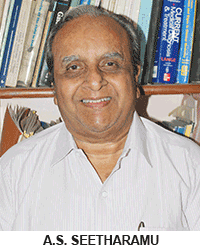
My association with EducationWorld which celebrates its 21st anniversary this month, precedes the birth of this news magazine which has positively impacted Indian education across the spectrum, and has aroused national awareness about the critical importance of human capital development. In 1999 when I was professor of education at the Institute for Social & Economic Change (ISEC, estb.1972), I met Dilip Thakore, then editor of a magazine named School, a publication with modest ambitions but even more modest resources that featured a cover story on ISEC. I was impressed to learn that he was the founding-editor of Business India and Businessworld — India’s first two business magazines — and I was delighted to learn that he intended to replicate his experience of liberalising and deregulating Indian education as he had done for industry and business. A year later when he promoted EducationWorld I readily provided advice on education issues to the new publication.
Since then I have been an adviser and consultant to EW providing statistical data on a variety of diverse subjects and education issues. Over the years my admiration for this rigorously written and edited magazine based on hard data and evidence that provides a wealth of insights in support of its causes and arguments, has grown.
My relationship with EducationWorld has persisted for over two decades because throughout my academic career I had advocated ‘quality with equity’ in school, higher and professional education through my writings, public lectures and teaching. I believed — and continue to believe — that universalisation of ECCE (early childhood care and education) and vocational education for skills development, inclusion of children with special needs, professional development of teachers and creating linkages between education institutions and rural and industrial development programmes, are the prerequisites of a successful national development effort. These causes have been dedicatedly championed by EducationWorld for 21 years, with considerable success.
In the circumstances it’s heartening to note that ECCE, vocational and special needs education, intent to upgrade teacher education and professional development, and need to focus on learning outcomes in the broadest sense, are given high priority in the National Education Policy (NEP) 2020.
Another worthy cause that has been fearlessly embraced by EducationWorld is to accord privately promoted education institutions from preschool to universities, their place in the sun and to free them of red tape and vexatious regulation by Central and state government bureaucracies. This was an overdue and important initiative because contrary to popular belief propagated by Left academics and arm-chair critics, private schools not only teach and mentor 47.5 percent of India’s in-school children, they also benchmark themselves with best institutions and practices worldwide. Thus private sector education institutions play the vitally important role of improving overall teaching-learning standards and raising the floor of Indian education.
However the outreach of EW to education practitioners, government and the intelligentsia is far from adequate notwithstanding the initiatives, effort and investment of time and other resources made by this publication. This can be attributed to the nonchalant mindset of stakeholders in education smug with existential contentment, disinterest in public issues and replete with self-oriented worldview. I believe the EW management needs to adopt aggressive marketing strategies to reach teachers associations, institutional administrators and institutions of legal, medical, civil service and management education who could serve as useful platforms to disseminate the message of this mission-driven publication.
Another especially praiseworthy initiative of EducationWorld is the presentation of an alternative human capital development budget concurrently with the Union Budget every year. This alternative budget began as an exercise to provide a financial roadmap to the Union government to mobilise revenue for building essential lib-lab-lav (library, laboratory and lavatory) infrastructure in the country’s 1.20 million under-served government schools. With this author providing research data indicating the total number of government schools deficient in this vital infrastructure, unprecedentedly EW has been suggesting ways and means to fund a national education rejuvenation programme.
In the latest alternative budget presented by EducationWorld, ways and means of raising an additional Rs.8 lakh crore for one-time investment in preschool and K-12 education is presented (see www.educationworld.in). It’s a pity that there’s been no official or academic response to the several alternative human capital development budgets.
Be that as it may, it’s undeniable that during the course of 21 years of uninterrupted publishing, EW has made a huge contribution to development journalism. It now needs to expand its reach and valuable message to accord prime importance to developing the country’s abundant human capital.